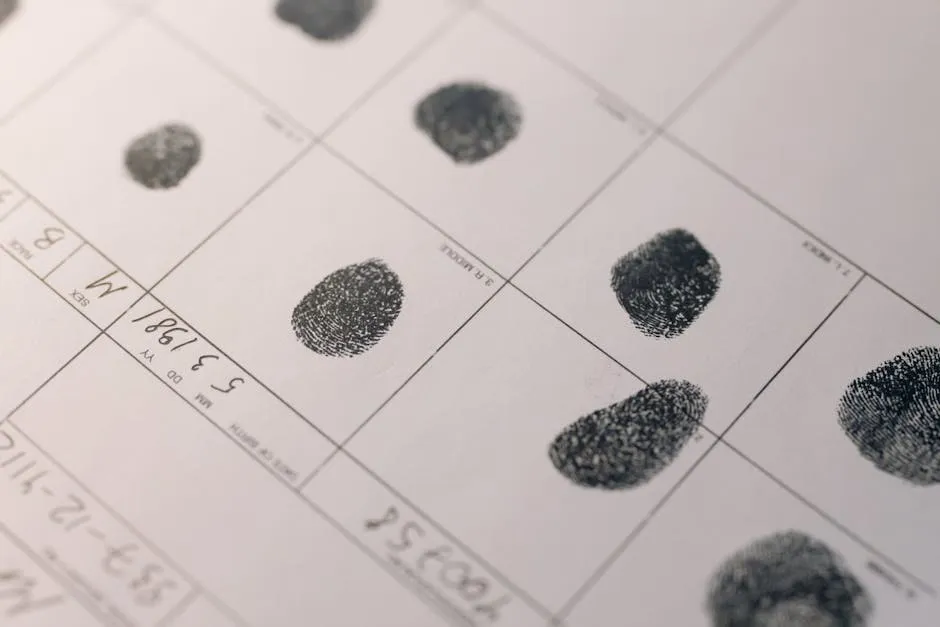Introduction
Understanding crime statistics in Louisiana is crucial. Why? Because these numbers impact everyone—from residents to policymakers. They shape community safety initiatives and influence law enforcement strategies. Knowledge is power, and when it comes to crime, it’s vital to know what’s happening in your backyard.
Louisiana has long been known for its unique culture and vibrant cities. But it also has a notorious reputation for high crime rates. Recent statistics reveal that Louisiana recorded 154,999 crimes in 2022. Among these, 28,852 were violent crimes, while 126,147 were property crimes. When compared to the national averages, Louisiana’s crime rates raise eyebrows and spark conversations.
For example, the violent crime rate here stands at 6.29 per 1,000 residents. In contrast, the national median is a much lower 4.0. Similarly, property crime rates in Louisiana hit 27.48 per 1,000 residents, while the national average is 20.0. These figures illustrate a significant disparity and highlight the importance of understanding crime trends.
Speaking of understanding trends, securing your home is more important than ever. Investing in a Home Security Camera System can give you peace of mind, allowing you to monitor your property while you go about your day. Because let’s be honest, who doesn’t want to feel like a secret agent in their own home?
Accurate crime data is essential for public safety measures. It informs community awareness and empowers residents to make informed decisions. Residents can gauge the safety of their neighborhoods, and policymakers can allocate resources effectively. Law enforcement agencies depend on these statistics to create strategies that address crime hotspots.
In this article, we will analyze crime statistics in Louisiana thoroughly. We will explore various crime rates, break down the data, and compare Louisiana’s statistics with national averages. So, buckle up, as we navigate through the intriguing world of crime statistics in the Pelican State.

Louisiana Crime Overview
Overview of Crime Rates
Let’s dive into the numbers. Louisiana recorded a staggering 154,999 crimes in 2022. Out of this, violent crimes accounted for 28,852 incidents, while property crimes made up a hefty 126,147. This data indicates that property crime is the more prevalent issue in the state.
Now, how does these numbers translate to a crime rate? The overall crime rate in Louisiana is approximately 33.77 per 1,000 residents. Breaking it down further, the violent crime rate stands at 6.29 per 1,000 residents, whereas the property crime rate is at 27.48 per 1,000 residents. This suggests that while violent crimes are alarming, property crimes pose a greater risk to the average resident.
To put this in context, consider that the chances of becoming a victim of violent crime in Louisiana are 1 in 159. In comparison, property crime poses an even steeper risk, with a likelihood of 1 in 36. These statistics paint a vivid picture of the crime landscape in Louisiana, indicating a pressing need for community vigilance and proactive measures.
And while you’re at it, why not equip yourself with a Personal Safety Alarm Keychain? It’s a small but mighty tool that can help alert others in case of an emergency. Because let’s face it—sometimes, a little noise can go a long way in scaring off trouble!
By understanding these crime statistics, residents can better assess their surroundings. This knowledge empowers them to engage in community safety initiatives and collaborate with law enforcement. Moreover, it highlights the importance of accurate data in ensuring public safety and fostering a sense of community.

Violent Crime Breakdown
Statistics on Violent Crimes
In Louisiana, violent crimes include murder, assault, robbery, and rape. The statistics for 2022 are eye-opening:
- Murder: 740 incidents (0.16 per 1,000 residents)
- Rape: 1,975 incidents (0.43 per 1,000 residents)
- Robbery: 3,091 incidents (0.67 per 1,000 residents)
- Assault: 23,046 incidents (5.02 per 1,000 residents)
These figures reveal a significant concern. While the murder rate is alarming, assaults make up the overwhelming majority of violent crimes in the state.
Chances of Victimization
Your chances of becoming a victim of violent crime in Louisiana? About 1 in 159. This means that, statistically speaking, some folks might want to consider taking up a martial art or investing in a good Self-Defense Training Equipment. After all, better safe than sorry, right?

Property Crime Breakdown
Statistics on Property Crimes
Property crimes in Louisiana encompass burglary, theft, and motor vehicle theft. Here’s how it breaks down for 2022:
- Burglary: 22,850 incidents (4.98 per 1,000 residents)
- Theft: 89,052 incidents (19.40 per 1,000 residents)
- Motor Vehicle Theft: 14,245 incidents (3.10 per 1,000 residents)
With theft leading the charge, it’s clear that property crime poses a sizable risk to residents.
Chances of Victimization
Now, what are the odds of falling victim to a property crime? Unfortunately, about 1 in 36. That’s a staggering risk, prompting many to invest in reliable locks and perhaps even a Smart Door Lock for added security. Because let’s face it—your front door should be more than just a decorative piece!

Crime Comparison with National Averages
Violent Crime Comparison
When we stack Louisiana’s violent crime rate against the national median, the difference is startling. Louisiana boasts a violent crime rate of 6.29 per 1,000 residents, while the national median sits significantly lower at 4.0. This stark contrast underscores the challenges Louisiana faces regarding public safety and community well-being.
In plain terms, if you live in Louisiana, you’re way more likely to experience a violent crime than in many other states. This calls for heightened community awareness and proactive measures to combat this troubling trend.
By understanding these numbers, residents can make informed choices about their safety and take part in community initiatives aimed at reducing crime.

Property Crime Comparison
When we stack Louisiana’s property crime rates against the national median, the differences are striking. Louisiana has a property crime rate of 27.48 per 1,000 residents. Meanwhile, the national median stands at 20.0 per 1,000 residents. This alarming trend highlights a significant issue that needs addressing.
The most common property crimes in Louisiana include theft, burglary, and motor vehicle theft. In fact, theft alone accounted for a whopping 89,052 incidents in 2022. That’s about 19.40 per 1,000 residents! This suggests that if you leave your bike unattended, it might just wander off to an undisclosed location. To prevent this, consider investing in a Bicycle Lock—because a locked bike is a happy bike!
Burglaries, too, pose a considerable threat, with 22,850 incidents recorded—equating to nearly 5.00 per 1,000 residents. So, locking your doors isn’t just a good idea; it’s an absolute necessity! The data clearly indicates that property crime is a more pronounced issue in Louisiana compared to other states, warranting increased community vigilance and proactive measures.

Analysis of Crime by Location
Major Cities in Louisiana
Now, let’s shift our focus to the major cities within Louisiana. New Orleans, Baton Rouge, and Shreveport are often in the spotlight when discussing crime statistics.
New Orleans
New Orleans is renowned for its vibrant culture and music scene. However, it also faces significant challenges. In 2022, the city recorded a staggering 4,516 violent crimes, with a violent crime rate of 11.45 per 1,000 residents. Murder, assault, and robbery rates are particularly concerning. In fact, New Orleans had 121 murders in 2022 alone. With a murder rate of 30.7 per 100,000 residents, the city continues to grapple with serious safety issues.

Baton Rouge
Next up is Baton Rouge, the state capital. This city recorded 2,066 violent crimes in 2022, translating to a rate of 9.36 per 1,000 residents. Baton Rouge also saw 70 murders, which is an alarming statistic for a city of its size. The city faces challenges related to gang violence and drug-related crimes, which exacerbate the overall crime situation.

Shreveport
Shreveport, another major player, reported 1,462 violent crimes in 2022. The violent crime rate here stands at 7.79 per 1,000 residents. While this is lower than New Orleans, it’s still a cause for concern. Shreveport struggles with property crimes as well, with 9,189 incidents reported.

Safest Cities in Louisiana
Despite the crime statistics in major cities, there are safer havens in Louisiana. Here’s a look at the top ten safest cities in the state:
- Pollock
- Sugartown
- Calvin
- Epps
- Athens
- Atlanta
- Pointe a la Hache
- Baskin
- Gloster
- Lisbon
These cities boast low crime rates, and various factors contribute to their safety. Strong community engagement, effective policing, and low poverty levels often play a role in maintaining lower crime statistics.
Crime by Neighborhood
Understanding crime at the neighborhood level offers even more insight. Hotspots of crime often exist alongside safer areas. In New Orleans, for example, neighborhoods like the French Quarter attract tourists but also experience higher rates of property crime. Conversely, areas like Lakeview are generally considered safer, with lower crime rates.
Neighborhoods in Baton Rouge showcase similar trends. While some areas are notorious for crime, others enjoy a reputation for safety and community cohesion. Understanding these nuances can help residents make informed choices about where to live and how to engage with their communities.

Historical Context of Crime in Louisiana
Trends Over Time
Crime in Louisiana has a storied history, one that reveals significant fluctuations over the decades. In the early 2000s, crime rates surged dramatically. The peak came in 2005, shortly after Hurricane Katrina, when crime was particularly rampant due to a breakdown in social order. However, since then, we’ve seen a gradual decline in overall crime rates.
For instance, in 2018, Louisiana reported approximately 177,710 crimes. Fast forward to 2022, and that number has dropped to around 154,999. The violent crime rate, which includes murder, robbery, and assault, has also seen ups and downs. In 2012, the state recorded 22,868 violent crimes, the lowest in recent history. This fluctuation reflects the state’s challenges and resilience.
Statistically, Louisiana’s per-capita murder rate has been a notable concern. In 2022, the FBI reported a staggering 16.1 murders per 100,000 residents—one of the highest in the nation. The trend suggests that while certain initiatives have succeeded in reducing crime, challenges persist, especially in urban centers like New Orleans and Baton Rouge.
In light of these concerns, consider keeping a Fire Extinguisher handy. Because safety isn’t just about crime; it’s about being prepared for anything life throws your way!

Socioeconomic Factors
Socioeconomic factors play a crucial role in crime rates across Louisiana. Poverty is a significant contributor. The state consistently ranks among the highest for poverty levels in the U.S. In areas where poverty prevails, crime rates tend to be higher, particularly violent crimes.
Education is another critical factor. For instance, lower educational attainment correlates strongly with increased crime rates. Communities with limited access to quality education often struggle with crime, as individuals may turn to illegal activities as an alternative means of survival.
Social factors, such as family structure and community cohesion, also influence crime. In neighborhoods where families are fractured or community ties are weak, crime rates often spike. Conversely, areas with strong community engagement and support systems tend to enjoy lower crime rates.
Programs aimed at addressing these socioeconomic challenges—like educational initiatives and poverty alleviation efforts—are essential for long-term crime reduction. By fostering economic opportunities and nurturing community bonds, Louisiana can work toward a safer future.

Data Sources and Methodology
Collection Methods
Gathering accurate crime data is paramount for understanding trends in Louisiana. The primary method used is the Uniform Crime Reporting (UCR) program, managed by the FBI. This program collects data from law enforcement agencies across the state, providing a comprehensive view of crime statistics.
Another critical component is the National Incident-Based Reporting System (NIBRS), which offers detailed data on individual crime incidents. This system allows for a more nuanced understanding of crime patterns, providing insight into the circumstances surrounding each offense.
Additionally, local agencies contribute data through the Louisiana Uniform Crime Reporting program. This collaboration ensures that information is current and reflects the realities of crime in communities across the state.

Agencies Involved
Several key organizations play a role in compiling and analyzing crime statistics in Louisiana. The Louisiana Statistical Analysis Center (LSAC) is pivotal in this process. It maintains a database of criminal justice data and provides essential insights to lawmakers and law enforcement agencies.
The FBI also plays a significant role in crime data collection. Through its UCR and NIBRS programs, the FBI ensures that data is standardized across the nation. This allows for meaningful comparisons between states and a better understanding of crime trends over time.
In summary, the combination of robust data collection methods and the involvement of key agencies creates a solid foundation for analyzing crime statistics in Louisiana. Understanding this data is essential for implementing effective strategies to combat crime and enhance public safety.

Conclusion
Crime statistics in Louisiana reveal a complex and concerning picture. In 2022, the state recorded a total of 154,999 crimes, comprising 28,852 violent crimes and 126,147 property crimes. The violent crime rate stands at 6.29 per 1,000 residents—significantly higher than the national median of 4.0. Property crime rates aren’t any better, with 27.48 per 1,000 residents compared to the national average of 20.0. This disparity underscores the ongoing challenges Louisiana faces in ensuring public safety.
These statistics highlight the urgent need for action. Residents must remain aware and engaged in their communities. Local law enforcement agencies should prioritize outreach and collaborations with community organizations to address crime hotspots effectively. Policymakers must focus on resources that target prevention, intervention, and rehabilitation programs.
To enhance public safety, we recommend organizing community safety workshops. These can empower residents with knowledge about crime prevention measures and self-defense tactics. Furthermore, increasing funding for mental health and social services can address underlying issues connected to crime.
Looking ahead, several trends may shape the future of crime in Louisiana. The ongoing social and political landscapes will likely play a crucial role. Economic instability and growing social unrest can exacerbate crime rates. However, proactive measures, like community engagement and enhanced policing strategies, could lead to positive changes.
In summary, while crime remains a pressing issue in Louisiana, understanding the statistics is the first step toward creating a safer environment for everyone. Together, residents, law enforcement, and policymakers can forge a path toward a safer and more secure Louisiana.

FAQs
What are the current crime rates in Louisiana?
The latest statistics reveal that Louisiana recorded 154,999 crimes in 2022. This includes 28,852 violent crimes and 126,147 property crimes. The overall crime rate is approximately 33.77 per 1,000 residents.
How does Louisiana’s crime rate compare to the national average?
Louisiana’s violent crime rate stands at 6.29 per 1,000 residents, significantly higher than the national median of 4.0. In terms of property crimes, Louisiana’s rate is 27.48 per 1,000 residents, compared to the national average of 20.0. This indicates a pressing concern for public safety in the state.
What cities in Louisiana are the safest?
Some of the safest cities in Louisiana include Pollock, Sugartown, Calvin, Epps, Athens, Atlanta, Pointe a la Hache, Baskin, Gloster, and Lisbon. Factors contributing to their safety often include strong community engagement and effective policing.
How is crime data collected in Louisiana?
Crime data in Louisiana is collected through several methods, primarily the Uniform Crime Reporting (UCR) program managed by the FBI. Local law enforcement agencies report data through this system, which is then compiled to provide an overview of crime statistics.
What can residents do to stay safe?
Residents can take several practical steps to enhance their safety. These include staying aware of their surroundings, reporting suspicious activities to authorities, participating in local neighborhood watch programs, and securing their homes with proper locks and security systems. Engaging in community safety initiatives can also foster a sense of security.
Please let us know what you think about our content by leaving a comment down below!
Thank you for reading till here 🙂
Understanding the importance of crime statistics can lead to better safety measures in communities. fremont crime statistics
All images from Pexels




